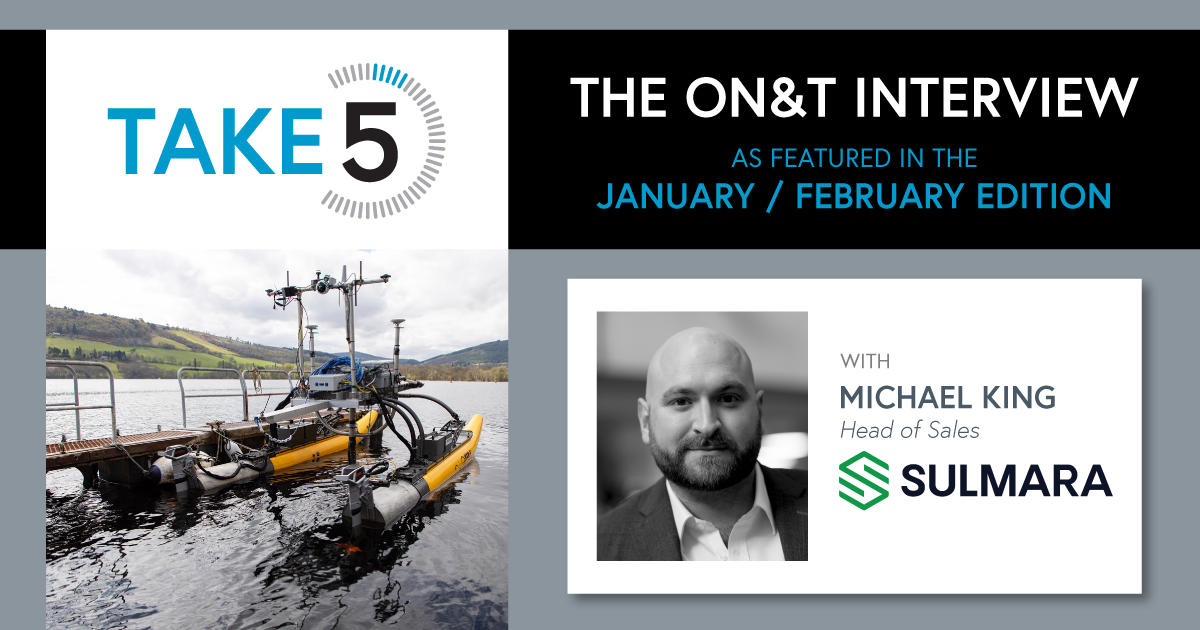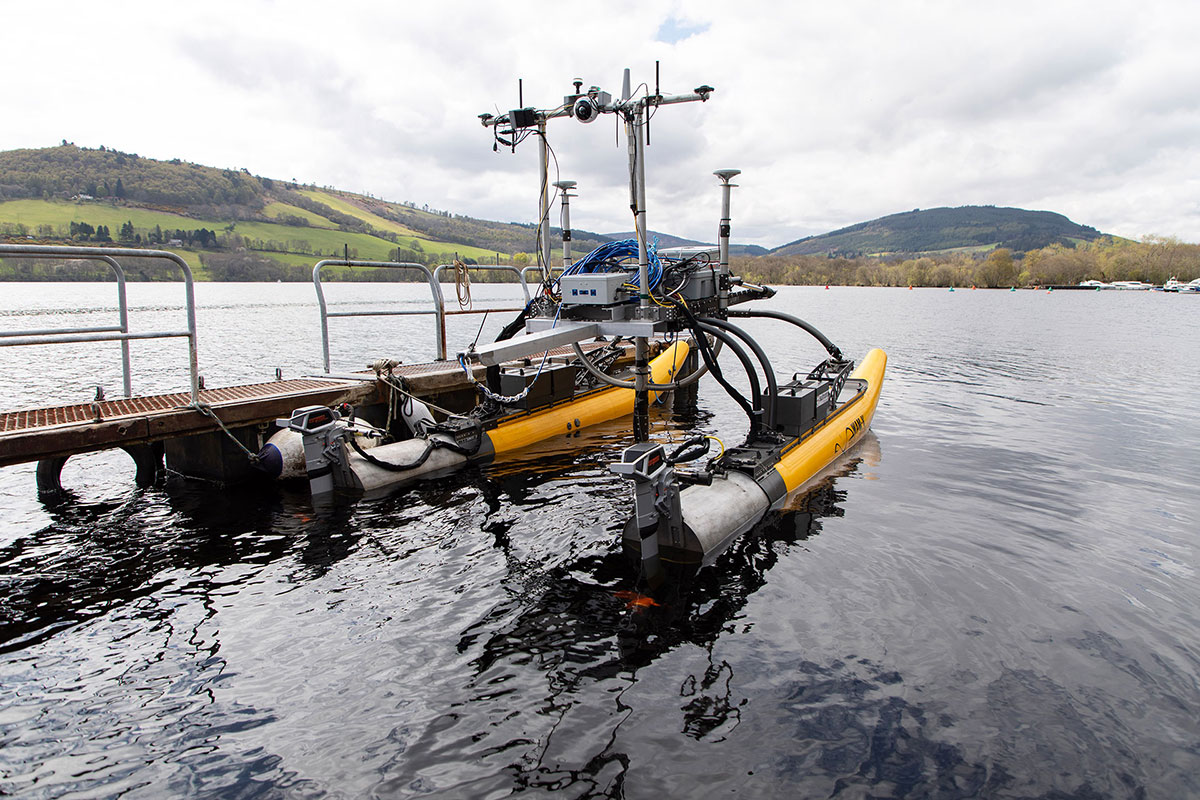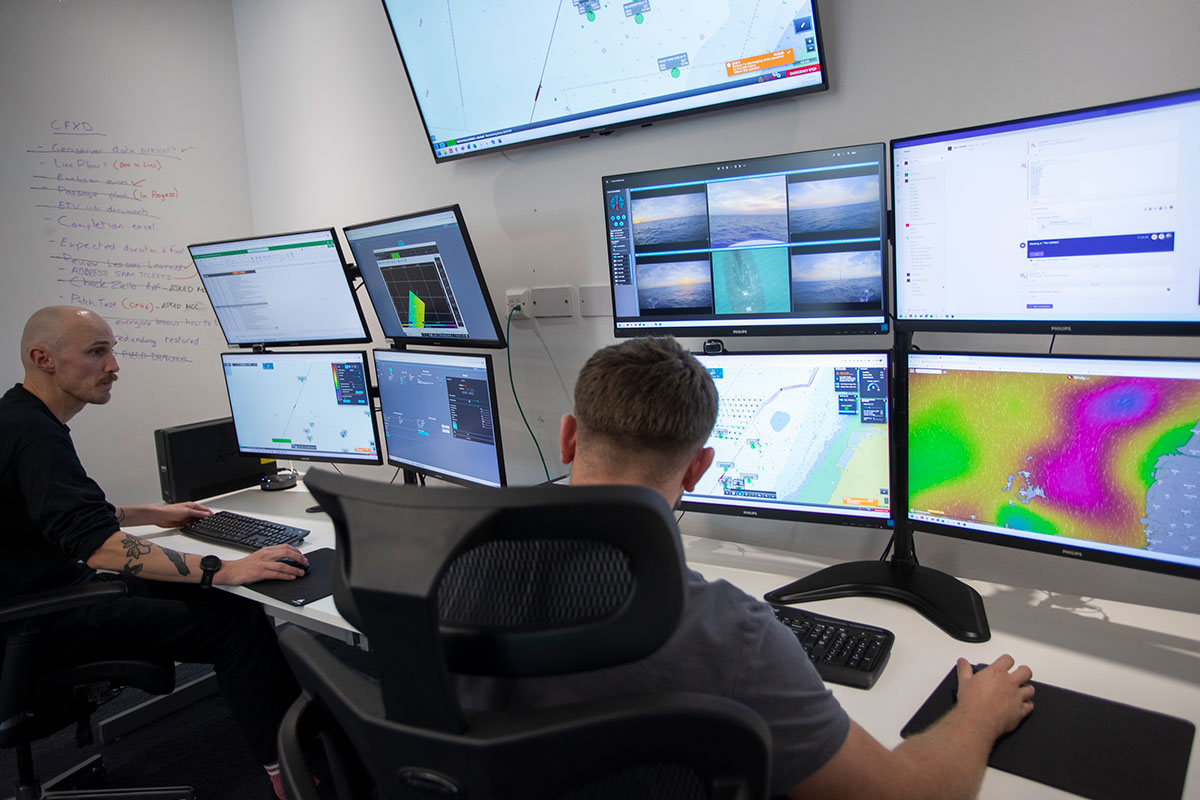
Should you be interested in participating in a future TAKE 5 interview, please get in touch at editor@oceannews.com.


Small footprint, big impact is perhaps the best way to sum up Sulmara’s influence on the international survey services market in recent years. Founded in 2019, Sulmara is laser focused on decarbonizing the offshore energy industry by substituting traditional operational support for the use of uncrewed and remote survey solutions. This month we catch up with Michael King, Sulmara’s Head of Sales, to find out more.
Sulmara is a leading international subsea services provider, specializing in site investigation, construction support, subsea survey, and asset inspection across the offshore energy and utilities sectors. We aim to drive the decarbonization of offshore services by using innovative technologies and methodologies.
We were established in 2019, and in that same year delivered an uncrewed surface vessel (USV) force multiplier survey solution generating carbon savings in excess of 4.5 million cubic meters on a single project—a real statement of intent. Since then, we have been at the forefront of USV operations globally, including being part of the first Orsted award for uncrewed survey services in 2021 on the Greater Changua offshore windfarm in Taiwan.
In 2023, we were delighted to be awarded a £2 million grant from Net Zero Technology Centre to advance the use of towed sensors from USVs for use in the offshore energy sector, building on successful delivery of over the horizon USV operations on three continents. We now have over 200 staff, and offices in the US, the UK, Singapore, and Taiwan to support our customers internationally. Our growth has been significant, not only in terms of our capabilities, but also our people and global footprint, and we will continue to expand in 2024, further de-risking the use of sustainable technology on behalf of our clients.
We aim to innovate with purpose, challenging industry conventions to deliver environmental, technical, and commercial advantages to our clients, because the environmental impact of our decisions doesn’t stay offshore.
 Sulmara’s WAM-V USVs are battery powered, so data can be acquired with zero carbon footprint. (Image credit: Sulmara)
Sulmara’s WAM-V USVs are battery powered, so data can be acquired with zero carbon footprint. (Image credit: Sulmara)
Our culture of innovation is what sets us apart. We don’t have all the answers, and we recognize that any technology has limitations. For many offshore tasks, USVs provide an alternative solution that significantly reduces CO2 emissions when compared to conventional technology, but they are not always the whole answer.
At Sulmara, we aren’t limited to one uncrewed platform or operational methodology; it’s our project experience with a range of different platforms and remote-control systems, in a variety of marine environments, that sets us apart. We are constantly solving real-world problems for our clients with evolving methodologies and technologies. Our people are empowered to take a problem or a challenge and solve it in a different way—beyond convention—and develop, de-risk, and prove solutions for our clients.
The use of uncrewed and remote technology will expand, that is hard to contest. It is now up to developers to invest in practical solutions that meet the demands of the sector.
We have already demonstrated that USVs with towed sensors can provide uncrewed capability in unexploded ordnance (UXO) clearance and risk management, and with more and more clients wanting low carbon solutions, USVs can be utilized in areas that make conventional deployments risky for the personnel on vessels.
We are working to improve on the towing capabilities of USVs to further expand the types of projects able to be completed remotely and with no one offshore. This will in turn expand their use across all phases of offshore energy projects. We have already worked with many of the world’s leading energy companies, such as Orsted and Chevron, proving the technology in the field, and we’re excited about our next phase of development. It’s not been easy—the application of new technology never is—but based on recent work in the field, we see USVs as central to the future of offshore survey.
 Sulmara sees remote operations as the key to safe and efficient offshore survey. (Image credit: Sulmara)
Sulmara sees remote operations as the key to safe and efficient offshore survey. (Image credit: Sulmara)
We have worked on many USV-inspired projects in recent years, from feasibility studies for the European Space Agency to over-the-horizon projects in Taiwan, each time using a USV model and configuration best suited to the environment of operation. Most recently, we’ve been proving some of our sensor towing capabilities for UXO missions, and for very shallow water route survey work where traditional techniques would not have yielded adequate data quality.
In the past, the complexity of towing additional sensors was seen as the most significant limitation of USVs. However, in 2023 we worked with one of our partners, UXO risk management experts SafeLane Global, to simultaneously collect detailed bathymetry data while scanning for potential UXO targets using a towed magnetometer array from one of our WAM-V USVs.
The USV was outfitted with a state-of-theart high resolution MBES system to acquire detailed bathymetric data and towed two magnetometers to detect any magnetic anomalies from potential buried UXO. This project was challenging given the extreme shallow water and operational confines of a port, where even the smallest crewed vessel would have struggled. Thanks to the innovative towing setup, we were able to provide excellent data quality to mitigate the UXO risk, and as the WAM-V USV is battery powered, the data was acquired with zero emissions. As part of our commitment to de-risking new technology, Sulmara carried out extensive trials on Loch Ness in Scotland, the only disappointment being no mythical creatures in sight!
We are busy working towards announcing some exciting additions to our business and expanding our offering to our clients. Not forgetting what sets us apart, we are driving innovation and technology development to ensure we can meet market needs, whilst keeping our impact on the environment as minimal as possible.
To achieve this, we have to be thought leaders, and we are proud to have been asked to moderate a series of thought-provoking panel discussions at Oceanology International this year, designed to challenge ourselves and our industry peers, clients, and suppliers to try and re-evaluate the way we do things, the overall risk management concepts we use, and how we impact the environment in the long term. We’ll also be taking part in similar technology and innovation-focused conference sessions at the Oceantic Network’s International Partnering Forum in New Orleans in April, sharing some lessons learned from our operations across the world and continuing the discussion with other industry leaders to work out how we can all get better.
Throughout this year, we will continue to challenge convention and collaborate with our partners to bring clients and technology to a path that delivers our energy needs with a clear focus on the impact we leave for the future.
For more information, visit: sulmara.com
This story was originally featured in ON&T Magazine's Jan/Feb 2024 issue. Click here to read more.

Ocean News & Technology
is a publication of TSC Strategic
8502 SW Kansas Ave
Stuart, FL 34997
info@tscpublishing.com